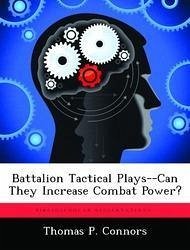The catalyst for this monograph is the current trend in the U.S. Army of using battalion tactical plays and battle drills. Such an approach could be worthwhile if it increases a unit's combat power. The purpose of this monograph is to determine whether or not standardized tactical procedures, in the form of battalion tactical plays, can be used by commanders to increase combat power. This study begins by defining tactical plays. It then examines the theory and history behind a scientific/systematic approach to war at the battalion level. The ideas of Clausewitz and B.H. Liddell Hart are used to support the contention that war at the tactical level is scientific and therefore, open to a systematic approach at the battalion level. Additionally, historical examples of a systematic approach to tactics are provided. They include the German, Japanese, and Soviet Armies. The major portion of the monograph discusses the advantages, disadvantages, and development of tactical plays. COL Huba Wass de Czege's combat power model is used as an analytical tool to determine if the use of tactical plays provides combat power advantages. Additionally, the disadvantages are discussed. Finally, two examples are used to illustrate how successful tactical plays can be developed. The conclusion reached is that tactical plays can be used by commanders to improve combat power but must be properly developed to avoid the inherent disadvantages of using them. Implications for doctrine and unit organization are discussed as well as possible approaches to play development.








